How to sharpen a lawn mower knife?
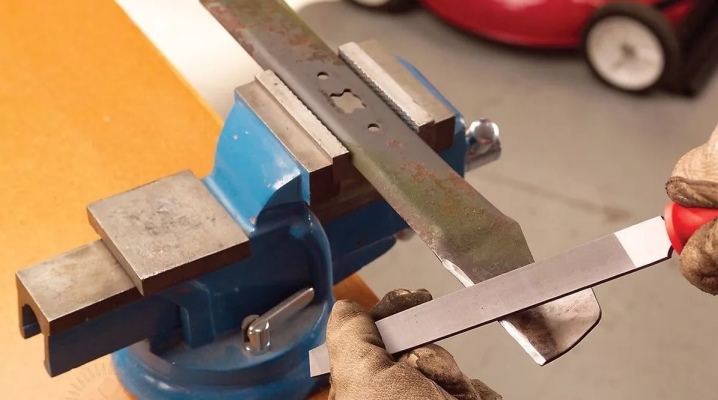
It is also possible to mow the mechanical slanting grass on the site with the help of a blunt knife. But rough cutting of the grass with a mower will spoil the appearance of the lawn: it will delaminate in the longitudinal direction. The resulting fringe will be an "callous" look for a few more weeks. In order for the lawn to be completely level and completely level, it is recommended to check the mower blade at least once a month - and, if necessary, sharpen it.
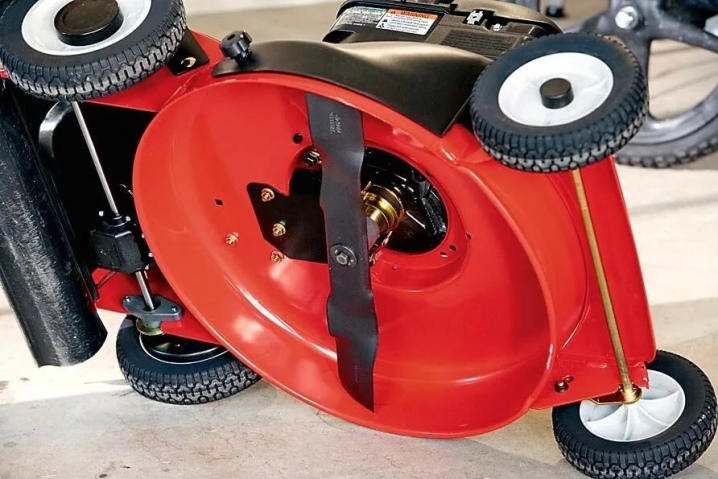
Required inventory
To level the mower blade, you need the following tools:
- Bulgarian;
- hammer and anvil;
- coarse sandpaper and a whetstone (in the form of a bar) with a grain size of 200-1500 grit;
- vice;
- ruler;
- a crowbar or wooden stick and a couple of stools;
- a drill with a head for grinding paper or sharpeners (discs).
This list is final. Some tools and fixtures may not be needed.
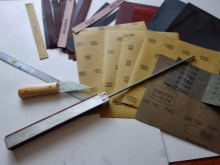
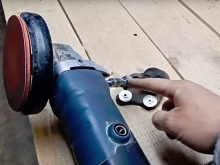
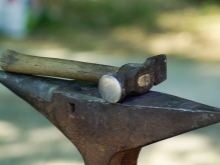
The ways
First of all, it is recommended to remove the knife from the mower.
It is unsafe to lift the machine itself onto a car overpass, drive it into a ditch or hang the mower without removing the knife. It may start when you accidentally press or touch the start button, pull on the starter cord, or the device is not fully functional.

- Manual way of sharpening knife blades - using a grindstone and sandpaper without any motors and machines. Aligning a serrated and broken blade with a hammer or sledgehammer is performed on an anvil, rail or black bar.
- Mechanized way, although supplemented by "blacksmithing" processing, requires sharpening on a grinder, saw or drill. The last two options require a special attachment on which the grinding disc is put on.
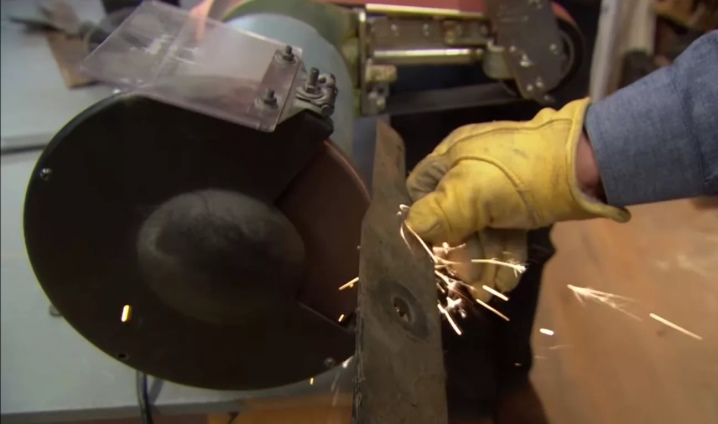
The mower knife sharpens evenly and along the entire length of (each) point. To prevent the ball bearings of the motor or gearbox from breaking, centering the knife is best done by a turner on a lathe... But even without a lathe, the result will be quite decent.
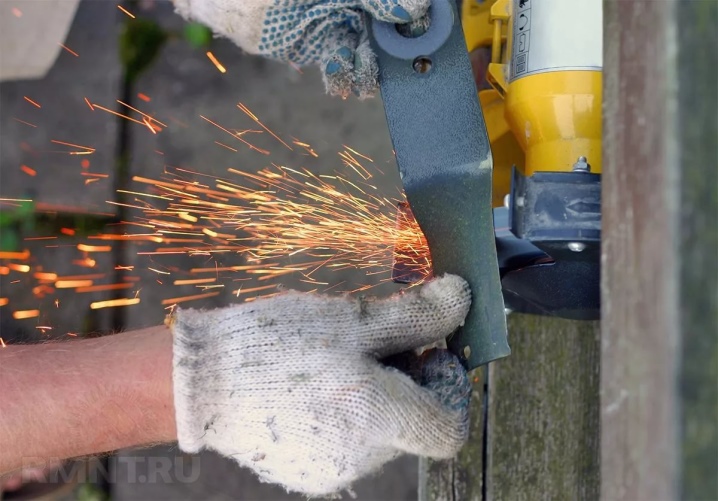
Angle selection
The sharpening angle is just as important as keeping the center of the knife balanced. Ideally, it is 30 degrees. Too small an angle will turn the knife into a kind of razor blade, magnified dozens of times and dull at the very first cutting of weeds or trimming bushes.
Too big - it will rather hit and break plants than cut them.
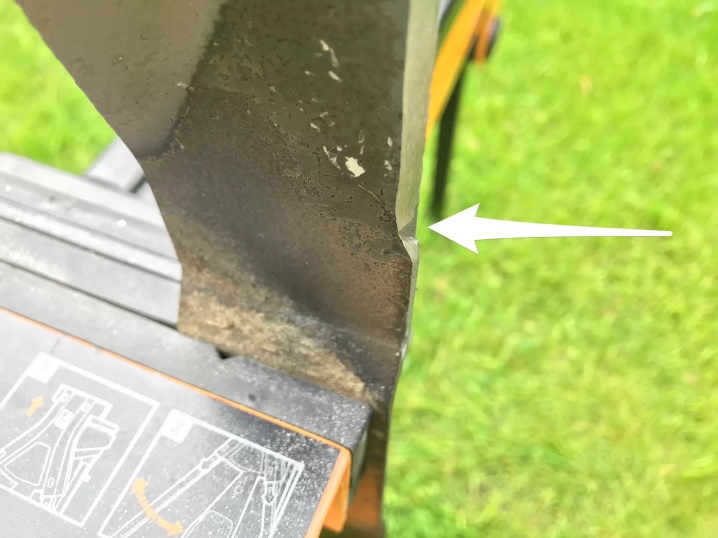
Phased execution
There is no need to look for a master to sharpen a lawn mower knife correctly. If you know how to handle manual and mechanical tools, then even without having the skills to sharpen knives and blades, but doing everything strictly according to the instructions, learn how to sharpen your mower cutters right away.
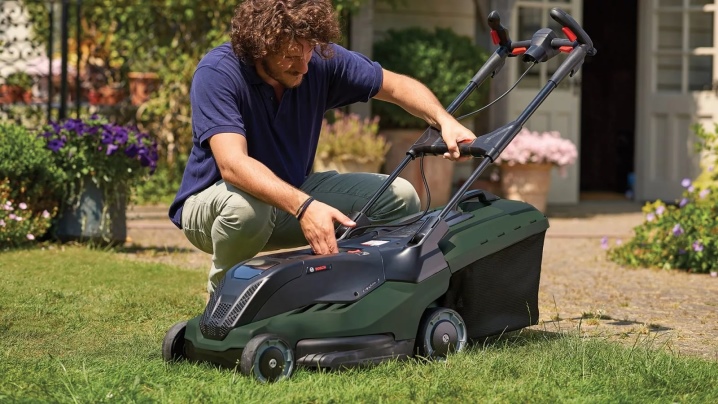
Follow some steps to remove the knife.
- Position the mower so that the bolt holding the blade is easily accessible to you.
- Place a block of wood under the knife to prevent the shaft from spinning.
- Try unscrewing the nut with a 19 mm wrench. Nut size may vary. On many mower models, the knife is fixed with a central bolt, and held in place with a spring washer with a nut.
- If the nut does not turn away so as not to rip the edges of the bolt or wrench, saturate the threaded joint with oil or grease. Leave it like this for a few hours.
- If there is not enough force on the wrench lever, hit with a hammer in the direction of unscrewing the nut - counterclockwise.In most cases, the nut can be removed without problems.
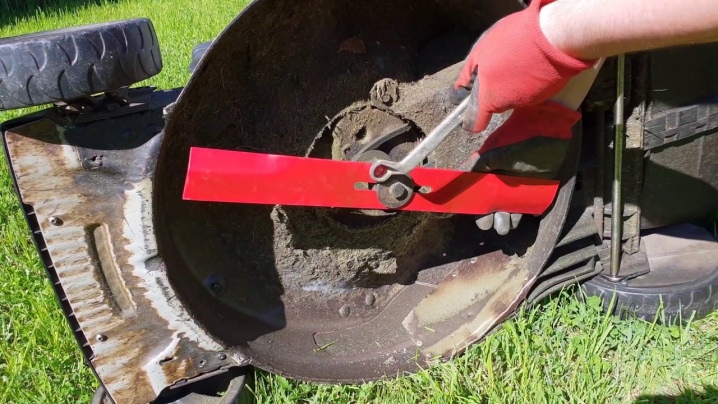
The last two steps will save you the adapter that secures the motor or gear shaft to the knife. The spindle mower will not work without it. If you still cannot remove the cutter with your own hands, then contact a workshop.
In case of minor damage, the cutter is sharpened without removal.
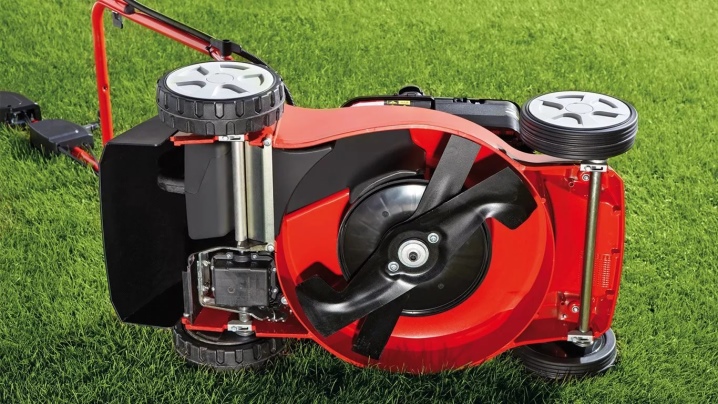
Cleaning and straightening
After removing the knife, clean it of dried grass residues and dirt. There is no need to clean it up to a metallic sheen. But there should be nothing extraneous on the blades themselves.
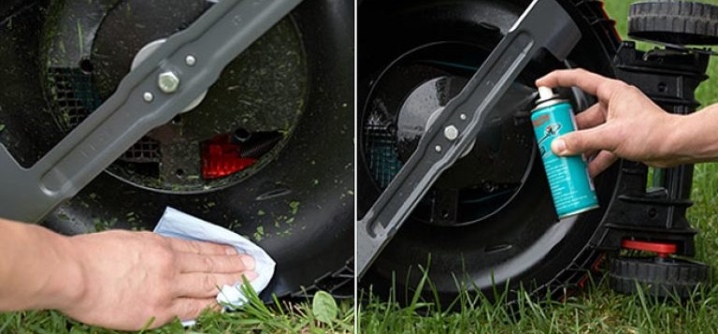
If the knife is serrated and bent, it must be straightened.
Straightening is done with a hammer and an iron bar or piece of rail that serves as an anvil. When, when leveling the knife, new breaks and cracks appear, it is useless to restore such a point. If, after leveling, the cracks are small, grind off the cracked strip of steel until the knife blade is completely flat.

Taking out descents
Blade slopes - the border zone between the base of the working part and the edge of the tip. As well as for kitchen knives that perform completely different functions, descents to the edge have their own normative spread of indicators.
Removing even and precise descents on the knife is half the success in restoring the original point.
On the mower blades, the predominantly "single slope" descent is used. Too "steep" descent (30-60 degrees) - as well as too "gentle" (less than 30 degrees) will lead to a rapid blunting of the point, a rapid loss of its cutting properties. On the cross-section of the knife, the start of the cutting edge should not be crooked. Smooth slope, in contrast to rounded, is much more resistant to dirt and easier to clean.

Sharpening the blades
Mower blades are sharpened with:
- chisels, files and sandpaper;
- grinders (using sanding discs);
- an electric drill or any motor with a special attachment on which a round whetstone is attached;
- on an emery machine.
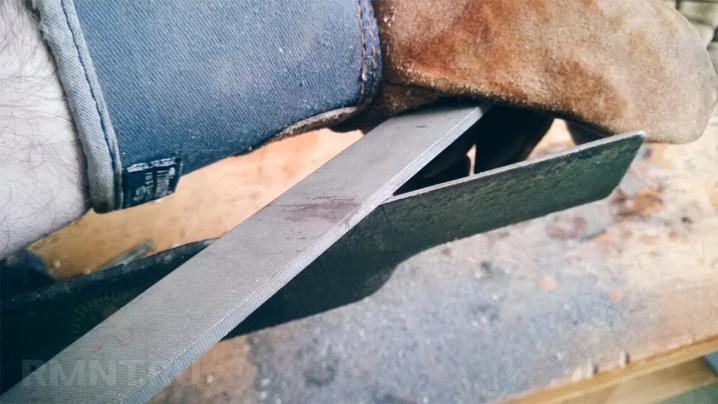
Make sure there are no dents, notches or dents on the knife blades. For high-quality sharpening, you will most likely need a vise - they will firmly fix the knife in a position ideal for quick sharpening. Small notches and dents are removed with a chisel or file or a coarse-grained sharpener.
More precise sharpening is performed with a fine-grained sharpener or emery of zero or first grain size.
Sharpening performance will increase when you use a drill with an adapter, on the chuck of which a sharpening stone or emery wheel is attached. Now plug in and run your drill or sharpener. Begin sharpening the serrated edge of the knife.
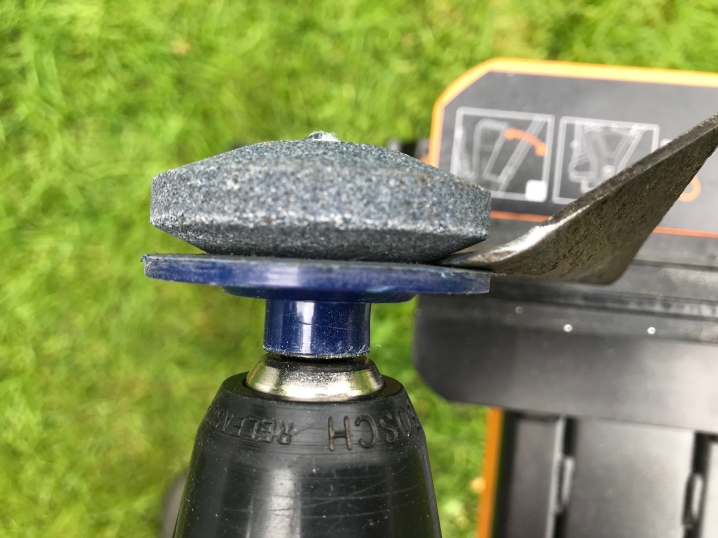
When sharpening, certain rules should be followed.
- Do not apply excessive force to the product, smoothly move the emery wheel.
- Do not overheat from friction when sharpening.
- Dampen the knife periodically with soapy water.
- Keep the sharpening angle constant to avoid the sawing effect on the cutter. The roughness of the point, its "pockmarked" line will lead to the formation of the smallest notches in the very first minutes of work.
You can attach a drill or sharpener, and move the knife along the edge of an emery or sharpening wheel.
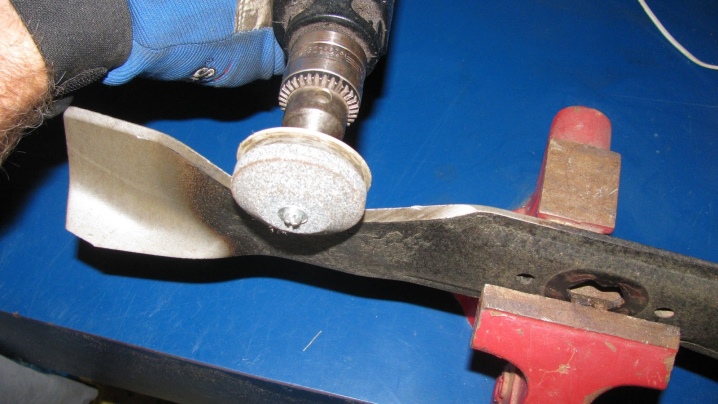
Editing edges
Experienced craftsmen also grind a newly sharpened knife.
- Instead of a grindstone or emery wheel, install a felt wheel on the motor shaft.
- Turn on the engine and apply a little GOI grinding paste to the wheel, lightly pressing a piece of the compound against the rotating wheel. Make it an even layer on the circle.
- Press the torch to be machined against the revolving wheel and move the sharpened point in any direction. Do not allow the point to turn towards the fibers of the circle (do not sharpen "against the grain") - this can spoil the circle itself and provoke injury.
- If the surface of the circle begins to turn black from the metal powder being removed, apply a little more paste to it and continue processing.
Do not overheat the knife - the material of the sharp edge will dull it, make the point uneven.
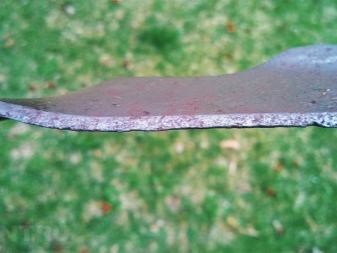
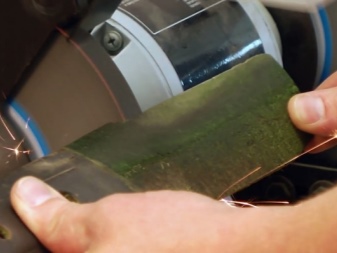
Balancing check
Blade balancing - checking the identity of the masses of the cutter halves. The check is performed according to the following scheme:
- the knife is put on a screwdriver, a pin or a nail with a large head, which will not allow the cutter itself to fall;
- the cutter rises to a small height;
- the product is inspected from all sides for a shift in balance.
If the knife is at rest horizontally, the balance is correct. Rejected - you need to sharpen it a little to remove the advantage. Excess layers are removed gradually. The knife is periodically checked for skewing - as soon as it lies horizontally, the sharpening is stopped.
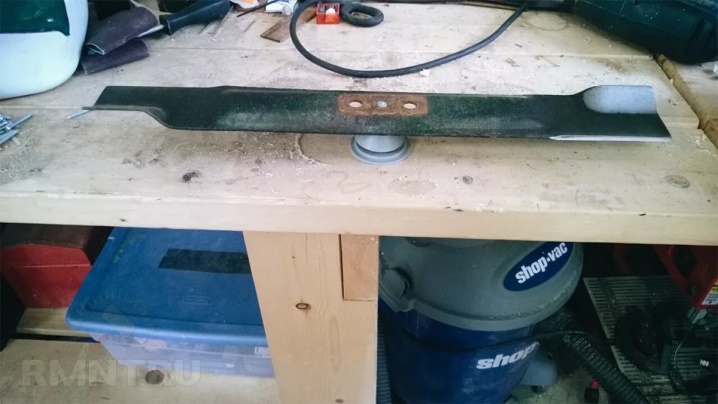
Do I need to sharpen my knife after purchase?
Sharpening at the factory is carried out using a conveyor diamond disc. Nevertheless you can return the edge to its original sharpness in no more than 10 minutes. Unscrupulous manufacturers do not always perform high-quality dressing after running and main sharpening.
You can additionally sharpen the blades from the back side by passing the cutter through a rotating sandpaper rolled into a cylinder and fixed in the drill chuck.
In this case, the blade, although it is pressed against the sandpaper from the back, the inclination in the direction of the point is small. The goal is to remove all downhill risks left after the main sharpening phase.
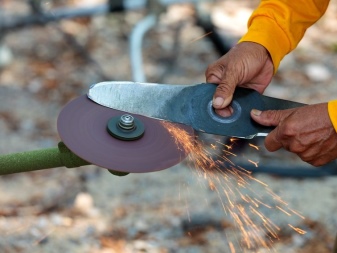
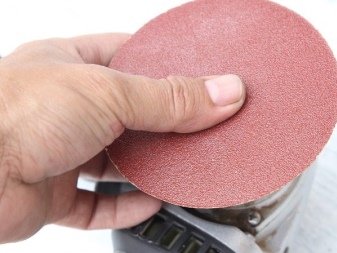
In the following video, you will learn universal guidelines for sharpening lawn mower knives.



































































The comment was sent successfully.